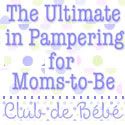 by Sharon Silver
by Sharon Silver
A 3 yr old hits a friend and mom says, “that’s not appropriate, it’s unacceptable to hit a friend, go say sorry.” Everyone says it—but are those the best words to use when a child is emotional? Does it teach a child how to resolve the situation next time? It does tell him that mom and dad are upset, but so does your tone of voice and the look on your face. I think parents want more from corrections. I think parents want the words they use words to stop behavior and tell a child what they should do instead.
- Why isn’t saying, “that’s not appropriate or not acceptable” enough to stop behavior?
When a child is emotional or being corrected for misbehavior those words are over their heads.
I did an experiment a while ago with 20 kids ages 2-6. I asked them “what does ‘not appropriate’ mean?” All but one of them said, “I don’t know.” One child said, “Oh, that’s what mom says when she gets mad.”
Would you ever say, “that’s not fitting for this particular purpose” or “that’s not adequate to satisfy a need, a requirement or a standard in this situation” to a young child? Of course not, it’s way over their heads. Well, that’s the definition of appropriate and acceptable. - Toddlers/preschoolers are having first time experiences and require repetition and teaching to learn.
Young children are experiencing situations for the first, second or third time—ever.
They need to be told about their behavior repeatedly without anger; they need to be taught. A common problem arises when parents assume that since their toddler/preschooler is walking, talking and possibly potty trained they have full understanding of how life works and full comprehension of the English language—they don’t, they need calm parents to show them what to do instead of what they did. - Teaching a child how to “stop it” without using those words.
Parents need to send information at the toddler or preschool level so a child can learn how to stop it.
What’s the difference between adult–size words and toddler/preschool size words? When a child’s emotional because they can’t have what they want or they’re being corrected due to misbehavior toddler/preschool size words are brief statements filled with instruction, not full sentences. The statements include what a child should be doing instead of what they’ve done. - Real Life example.
You’re at the mall and your child runs off to see a big fountain.
You begin warning by saying, “Not acceptable to go near the fountain.” Or, “Not appropriate to run away from me, stay away from the fountain or we have to leave”, yet your child bolts towards the fountain anyway!
Since your child is determined to see the water and isn’t listening, use toddler/preschool size words to show him how to look at the fountain the way you want him too. Try saying, “look with eyes, feet on ground, hands in pockets”. Repeat those words several times so he can understand. - What if he doesn’t listen the first few times?
Have him take a seat with you a few feet away from the fountain and wait for 3-10 seconds. Then return to the fountain and repeat the words again, “look with eyes, feet on ground, hands in pockets.” If he tests you again repeat the process again. Don’t give up it may take 3-10 times for him to get it. This is your chance to show him how you want him to do things and if you give up he will see he doesn’t need to listen to this new way of teaching. Teaching this way shows him you’re serious, and gives him several chances to learn. You’ve just switched from adult words that don’t teach to preschool size words that do.
Sharon Silver is the founder and director of ProActive Parenting, www.proactiveparenting.net a site offering downloadable seminars to help parents lovingly teach and correct behavior as they deal with everyday toddler and preschooler behavior.





















0 comments:
Post a Comment